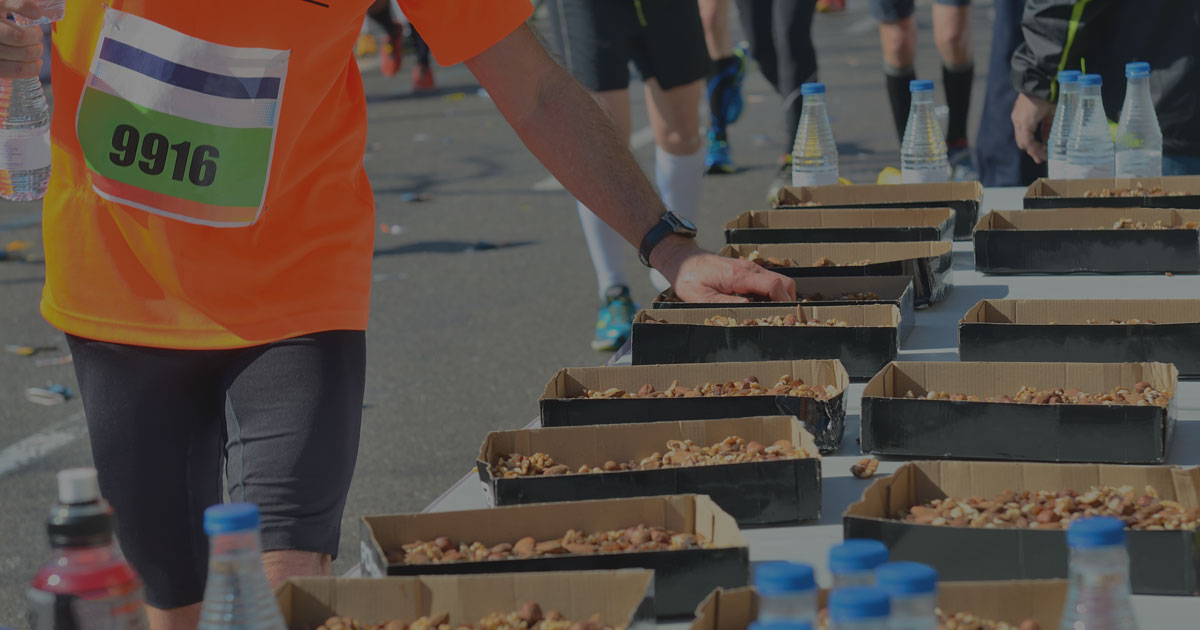Fine Tuning Your Fuel Leading up to a Long-Distance Race

If you’re running the RUN CRANDIC marathon, half-marathon or 5K, you are in the final weeks of your training regimen (the end is near!)
The only big change you should be making is tapering your training.
Regarding your nutrition, you should continue with the same solid plan you have been following throughout your training. You don’t need to increase your calories, but they should remain the same as during your high mileage training. This way the extra calories you would generally expend during training can be used to fuel your muscles. Making some minor changes to your nutrition plan will help you be in prime condition for race day. Like I mentioned in my previous fueling tips for marathon training post, practice makes perfect. It is a good idea to practice these changes during the week of your longest training run (usually a few weeks prior to the race) to get a sense of how your stomach and body adjusts.
- Increase electrolytes
Hydration is important throughout training, but especially during the weeks leading up to the race. Hydrating with only water you can dilute your electrolyte concentration, which can cause cramping and dehydration on race day. Refuel after training with a sports drink or electrolyte tab in the final weeks, even if your workouts are not longer than 60 minutes. Include electrolyte drinks in the final days before your race to improve your electrolyte levels for race day. This does not mean to avoid water, but that you should continue to hydrate with water like you have been, and simply add electrolyte containing drinks into your hydration plan. - Decrease roughage & high fat foods
Decrease intake of raw fruits, vegetables, beans, and whole wheat products within 24 hours of the race. These products are high in fiber, which can cause intestinal upset on race day. High fat foods slow digestion and leave your body feeling sluggish. Decrease your intake of fatty foods – fried foods, fatty meats, and baked goods) during the week before your race to avoid GI distress. - Carbo load the right way
Carbohydrate loading is a practice that has been shown in research to benefit those participating in endurance events lasting more than 90 minutes. With that said you can’t just wait to eat a big dinner of pasta the night before a race and expect to run well. Your muscles have to be receptive to storing carbohydrates, which happens through consuming adequate carbohydrates throughout training. Glycogen (stored carbohydrate) levels decrease quickly during moderate to intense exercise, you need to provide your body sufficient carbohydrates in the days prior to the race to increase glycogen stores. A few days before the race increase your carbohydrate intake higher than usual to help increase glycogen stores. You want to consume about 3-5g of carbohydrates per pound of body weight a day. If you weigh 150 lbs that is 450-750g of carbohydrates a day. Your last high-carb meal should be breakfast or lunch the day before the race. This will help increase glycogen stores for the race, but allows time for it to move through your system so that you don’t feel too heavy on race day. Dinner the day before the race, as well as breakfast on race day, should still contain carbohydrates, but in normal amounts. The last 24 hours are meant to top off your energy for the race.
Tips for successful carbohydrate loading:
- Maintain adequate carbohydrate intakes in the weeks prior to the race. Emphasizes good sources of grains fruits, and vegetables daily.
- Increase carbohydrate intakes a few days prior to your race to increase glycogen stores.
- The day before the race go back to normal intake of carbohydrates.
Things to avoid when carbohydrate loading:
- Failing to taper training may compromise carb loading. Your muscles need rest to be able to store carbohydrates and get refueled.
- Decreasing intakes due to taper in training to avoid weight gain. This leads to being sub-optimally fueled. Carb loading may cause body mass to increase by up to 3-5lbs due to water stored in muscles with the glycogen. This increase in fluids can help delay dehydration during the event or race.
Example of carbo-loading plan (based off a 150lb athlete):
From Nancy Clark’s Food Guide for Marathoners by Nancy Clark MS RD CSSD
| FOOD | CALORIES | CARBOHYDRATES (g) |
| Breakfast | ||
| Wheaties, 2 cups | 220 | 48 |
| Milk, 1%, 8oz | 100 | 12 |
| Bagel, 1 | 300 | 55 |
| Honey, 1 Tbsp | 60 | 17 |
| Orange juice, 12oz | 160 | 40 |
| Lunch | ||
| Whole wheat bread, 2 slices | 200 | 40 |
| Peanut butter, 2 Tbsp | 200 | 8 |
| Jelly, 2 Tbsp | 100 | 25 |
| Fruit yogurt, 8oz | 230 | 35 |
| Pretzels, 2oz | 230 | 48 |
| Snack | ||
| Apple, 1 large | 120 | 30 |
| Graham crackers, 4 squares | 120 | 22 |
| Dinner | ||
| Chicken breast | 250 | – |
| Rice, 1.5 cups | 300 | 65 |
| Broccoli, 1 cup | 50 | 10 |
| Dinner rolls, 2 whole wheat | 200 | 40 |
| Dessert | ||
| Banana | 100 | 24 |
| Sherbet, 1 cup | 260 | 45 |
| Total | 3,200 | 644 |
REMEMBER, everything is individual, so practice, practice, practice!